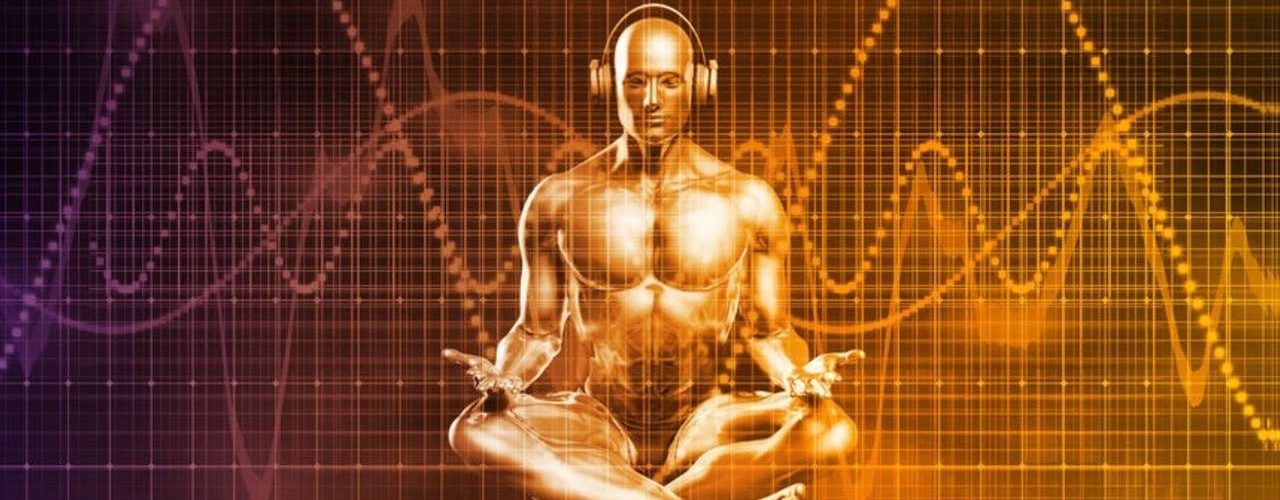Breathing In Beats

If your HRV is tight and regular, like a dance music beat, then you are in coherence. If however it’s value is chaotic and fluctuates a lot, it is a sign you are under stress, have low energy or an illness.
As breathing influences HRV, if you breathe to a consistent rhythmic beat you will quickly get into coherence.
Breathe In Heart Beats
This is the most simplest method ever for getting into coherence super fast.
- Sit comfortably in an upright position with your back straight.
- Put your finger on your pulse and start counting your own natural heart beat.
- Do full diaphragmatic rhythmic breathing to the count of 6 beats on the inhale and 6 beats on the exhale for 5 minutes.
- If your resting heart rate is around 60 bpm, then the frequency of each breath cycle will be 0.1hz. As your heart would beat on average at 1 second per beat if it’s 60 BPM. Entraining your breath to this frequency is the sweet spot for coherence.
- You can also change the I:E ratio to 4:8 or 6:12 or gradually increase the exhale time till you are comfortable with it.
- Use a heart coherence monitoring app and you will see that you quickly get into coherence.
Breathe In Drum Beats:
The same as above, but instead of using your pulse, use music that is around 120bpm or 60bpm. If you breathe in a 4/4 time signature, adjusted if you are breathing to music that is half tempo at 60bpm, then you will breathe in and out for 4 seconds, as each beat is 1 second.
Use an I:E ratio of 0.5 = 2 beats in and 4 beats out to uplifting beat driven music at 120bpm. You will quickly switch from sympathetic to parasympathetic and experience a feeling of euphoric bliss wash over you.
The Rhythm Of Life
In 2011, students at Brazil’s Federal University of Minas Gerais mined tempo data from the Billboard Hot 100 singles chart, the Billboard 200 album chart, and the Million Song Dataset for a tempo visualization project. They found that from the 1940s until our current decade, the average tempo of our most popular songs fluctuated no more than 5 bpm, hovering between 117 bpm to 122 bpm.
Styles of dance music such as house music that are rooted in african rhythms are naturally timed to around 120bpm. African drummers would play hypnotic rhythms that were instinctively coherent with optimum heart rhythms, and used these combined with breathwork to get people into altered conscious states. All music production software are by default set to 120 bpm. A healthy natural resting heart rate is around 60 bpm.
There are 60 seconds in a minute. By breathing in beats you would have 1 breath per second and this tempo quickly creates coherence. So this explains why 120/60 bpm is the natural rhythm of life.
By experimenting with different tempos of music, i.e higher and lower you can create different physiological states. Higher BPMs of 130-140 will lead to more energy and an ecstatic feeling, but can also create more stress, anxiety and even panic in the body so should be used appropriately and with caution. Changing the breath rate to a time signature of 8/8 will create a much more meditative relaxed state or 2/4 will be a more faster ecstatic state.
But the key is to breathe rhythmically – ‘breathe in beats’ and doing it to music makes it a lot more fun!
Breathe-Work In Beats – A Fun Conscious Coherence Rhythmic Breathing
Exercise
- During the day,for example while working on your laptop, or when doing stuff around the house, put on some beat drive music that resonates with you at around 100-120 bpm – deep house or tribal music would be an adequate choice.
- Bring your awareness to the rhythm of the music and begin to consciously breathe in beats with either 2:4 or 4:4 ratio to the 4/4 rhythm, slow, smooth and consistently.
- Do this for a few minutes, then gradually bring your awareness to your work. With practice your breathing with sync to the music on autopilot, with small fluctuations when you get an inspired thought. Whenever you lose focus on your work, bring your awareness back to your breath and breathe in beats. With this method your work or task will more easily flow. With regular practice your brain will change and rhythmic breathing will become a positive automatic habit.
- You can use an HRV app that measures coherence and see how long you stay in coherence even when bringing your awareness back into the work as a way to monitor your progress

